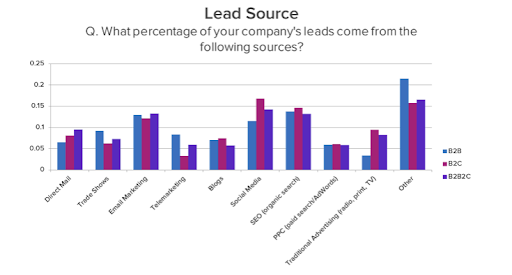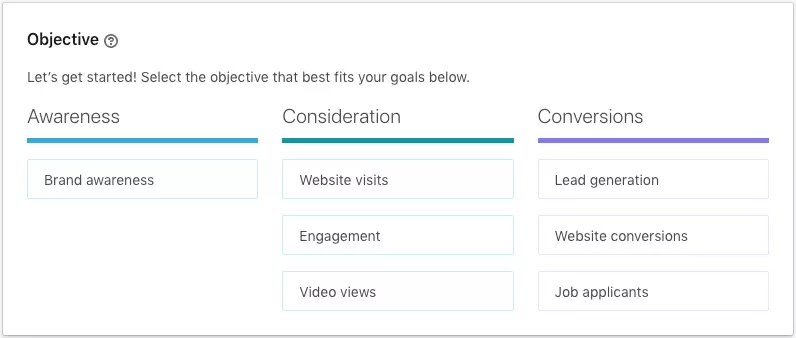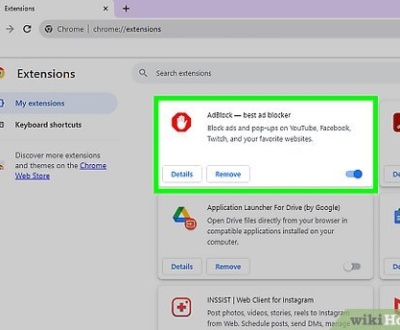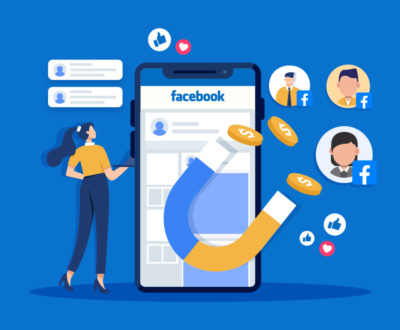How to Maximize the Generation of Leads in 2023
- January 9, 2023
- Digital Marketing, Inbound Sales, Lead Generation, Outbound Sales, Sales
Want to know the secret to the generation of more leads?
If you really want to know how to get more sales-qualified leads, you should Book A Call With Us Now!
We can help you understand the best strategy for your business and guide you along the way.
Now…
What is B2B lead generation?
B2B lead generation is short for business-to-business lead generation, which describes businesses that primarily sell to other businesses.
The journey of a thousand miles begins with a single step. And in a typical marketing strategy, marketing funnel or sales process, B2B lead generation is that step.
Lead gen involves collecting a potential customer’s information — such as name, email addresses, company name, and job title — and using that information to target them with customized sales pitches or ad campaigns.
B2B is different from business-to-consumer (B2C) lead generation, where products and services are sold directly to consumers.
B2C and B2B businesses also find leads in different places — which means if you’re trying to find potential customers with the same strategies as a B2C e company, you’re going to fail.
According to Hubspot, the three best lead sources for B2B companies are SEO (14%), email marketing (13%), and social media platform(12%).
B2C, on the other hand, gets more leads from traditional advertising, social media, and email.

It’s not just where leads come from — the nurturing process between B2B and B2C is also quite different, which is why marketers have to start on the right foot.
Why Is Lead Generation Important for Businesses?
Lead generation is a key goal for most businesses because, without leads, there are no sales, and consequently, no revenue.
Sure, a firm may have several important goals, but a large percentage of organizational goals focus on lead generation. When done well, lead generation can nurture qualified prospects from tentative interest all the way to the customers and ambassadors your brand relies on.
Lead generation is important because it asks the fundamental question, “what does your potential customer want?”
Once you’re able to answer that question and tie it to a high-converting landing page, you’ll consistently generate leads. You’ve still got to turn the lead into a customer, but it’s the starting point, and once you’ve got a sales pipeline full of leads, it’s much easier to tweak your sales strategies.
Types of Lead Generation
There are lots of different ways to generate leads. A convenient distinction in lead generation is outbound versus inbound, although there will be a crossover between the two.
Different businesses will use different lead generation tactics, so it’s about tweaking the type of lead generation you do until you find what works best.
Inbound Lead Generation
Inbound lead generation is when the prospect initiates the interaction with your business. Most often, this is done through content marketing.
A potential customer will find your content through the search engines or a social media link, love your article, and fill in a form with their contact details. From here, you can use your email marketing to progress the lead through the sales funnel, building the relationship until the prospect is ready to buy.
Seventy percent of marketers are actively investing in content marketing as a lead generation strategy, and it’s something that businesses have focused on a lot more in recent years.
The main types of inbound lead generation are:
- videos
- blogs
- guides and e-books
- pillar pages and content clusters
- social media posts
- infographics
- newsletters
- press releases
These are all content types that are strategically placed so people discover them organically.
Outbound Lead Generation
Outbound lead generation is when you initiate the interaction with the prospect. This may be done through a paid advert on Google or social media, cold email outreach, direct mail, or many other channels.
While inbound lead generation has become very popular in recent years, outbound marketing is still very important. Most businesses will find the best strategy is a mix of both inbound and outbound marketing to achieve their lead generation goals.
Some outbound marketing options include:
- paid search ads
- social media ads
- radio ads
- TV ads
- direct mail
- cold email
- cold calls
- print ads
Each option has its benefits and drawbacks, so it’s important to consider your budget and find out what will work best for you.
Lead Generation and SEO
A basic requisite for lead generation is to have people interacting with your business.
In the modern world, this is most likely to happen online, which means you’ve got two options: organic traffic or paid traffic.
When you’re looking for an answer to a question, what’s the first thing you do? The vast majority of people will type a query in a search engine. Google processes more than 3.5 billion searches every day, and the businesses that appear at the top of these search results are benefiting.
Search engine optimization is the perfect tactic because you reach people at the exact moment they’re looking for the information you have. You know they’re engaged, and they’re ripe to be converted into a lead.
The other big benefit of SEO is that you’re not paying for each click.
You’re building assets through your content, and if you practice good SEO, that page will be able to keep converting leads year after year.
Lead Generation and Paid Ads
The problem with SEO and inbound marketing, in general, is that it can be a slow process.
When you create a blog, you’re aiming for it to rank at best a few months down the line. If you need immediate results, then paid ads can be a much better option.
By investing in paid search ads or social media ads, you can get your brand in front of your target audiences. This is great for your visibility and allows you to drive a high volume of traffic to your landing pages.
Unlike with SEO though, you’re paying for each click, so it’s vitally important that everything you do is optimized. From your headlines to your landing pages, everything has to be geared towards turning visitors into solid leads.
Running paid ads is something of an art, and it can take time, but it can become a big part of your lead generation.
The B2B lead generation process
Learning how to get B2B sales leads is just one part of the process.
If you’re serious about increasing sales, you’ll need an intense lead generation process. Processes align marketing and sales teams and give reps a proven framework to follow.
We know that B2B lead generation describes the process used by sales teams and marketing teams to turn prospects into paying customers. But what do these steps entail?

Step 1: Find B2B sales leads
The first step in most B2B lead generation strategies is finding the contact information of potential buyers.
Contact information is often sourced in-house, generated by a third-party “lead gen” company, or bought from a lead database (not advisable for B2B lead generation).
Step 2: Reaching out to leads
With a list of (hopefully) high-quality leads, reps reach out to leads through cold outreach, social media, or by replying to inquiries.
Step 3: Qualifying & prospecting high-quality leads
While interacting with leads, reps measure how likely leads are to buy.
They’ll do this by gauging the stage leads are at during the buying process. These stages include:

1. Research & awareness: The prospective customer is aware of a solution they need or problem they face, and they begin to learn more about it.
The awareness stage is where they’ll consume content like blogs, whitepapers, and case studies.
2. Consideration: The lead knows the exact service/product that’s needed. They’ll detail their specific needs before researching and “opening up” to vendors.
3. Decision: Filtering through vendors that best suit their needs, the buyer will have multiple meetings and check-in with other decision-makers to complete a purchase.
Depending on what stage a lead is at, reps will initiate nurturing campaigns or focus on getting the prospect to book a call or demo.
Step 4: Close leads by making a sale
Success! After multiple meetings with different vendors, the prospect picks you, and the deal is done. They’ll now be transferred to customer success for onboarding. Woot!
4 Amazing Lead Generation Examples
Lead generation is an art, and there’s always room for optimization. Here are some examples of companies that have had great success with different lead-generation campaigns.
You’ll notice that many of these marketing campaigns have similarities, and one, in particular, is the omnichannel approach. This is a great way to ensure you’re maximizing your reach and bringing as many leads into your sales funnel as possible.
Here are four amazing lead generation examples to check out:
- Comarch uses LinkedIn to fill its pipeline two years ahead of schedule.
- Magic of Colby uses cold email to book over 200 virtual events in one season.
- An online education provider boosts efficiency by over 50 percent.
- Ramaley Group refreshes its web presence and builds smarter sales funnels.
These case studies can give you some good ideas on how to improve your lead generation, but the most important thing is finding out what works for you. It’s important to pay close attention to your analytics and keep A/B testing your approach.
It’s all in the optimization, so make sure you’re testing everything out to get the best possible conversion rate.
The Serial Seller Conclusion
Leads are the lifeblood of any B2B company; and we, for one, are never going to turn down ideas that can drum up more of them.
At The Serial Seller, we have a trialed and tested framework which we believe can be replicated for any B2B business no matter the company size, and for them to increase the leads, sales & consequently, revenue.
If you are a business owner an need more ideas for lead generation, check out these 50 ideas compiled by Optimizely here.
About us and this blog
We are a Full-Service Sales & Marketing provider that aims to help small to medium businesses increase their leads and sales while helping remove the business owners from their day-to-day activities so they can focus more on the long-term goals of their business.
Book a Meeting with us!
We offer Done-For-You Sales, Sales Coaching, and Advisory as well as Digital Marketing Services. If you want to increase the leads generated for your business and need some guidance and accountability, book a call with us now.
Subscribe to our newsletter!
More from our blog
See all postsRecent Posts
- How Do You Stop Google Ads May 9, 2025
- How to Make Money Off Social Media May 5, 2025
- How to Duplicate Page WordPress May 1, 2025










Pingback: How to Create an Effective Strategic Digital Marketing Plan